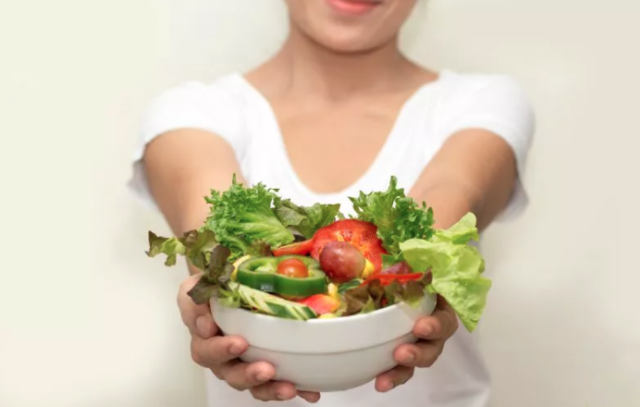Why you need to eat vegetables

The right vegetables, green and low in calories, are free of fat, cholesterol, and unhealthy additives. The composition is more than transparent: the task is only to steam the dish or with minimal use of oil.
With vegetable dishes, a person gets fewer calories than he spends. Some vegetables rich in fiber are called negative calorie foods: the body spends more energy on processing than it receives.
If you eat a burger or pizza, you will want to eat again in an hour, while vegetables swell in the digestive tract and provide a feeling of fullness for several hours. Therefore, every or most meals should be started with vegetables or a plate of salad. This will allow you to eat less other food, provide the body with energy and nutrients.
Also, vegetables remove excess fluid, speed up metabolism, cleanse the intestines, saturate the body with vitamins, trace elements, amino acids, are slowly digested and suppress appetite, improve digestion.
Starchy and non-starchy vegetables
Vegetables are classified into two groups due to their different carbohydrate content. Non-starchy – low-carbohydrate vegetables that can not be limited in the diet: peppers, spinach, broccoli, leafy greens, cucumbers, asparagus.
High-calorie vegetables: Brussels sprouts, cabbage and cauliflower, tomatoes, leeks. Starchy vegetables: legumes, potatoes, green peas, corn, beets, rutabagas, chestnuts, radishes, squash, squash, plant roots (parsley, parsnip, celery, horseradish), pumpkin, radish. In the process of losing weight, it is better to reduce their number, otherwise you can not reduce, but gain weight.
Why you can’t eat only vegetables
Raw vegetables can lead to intestinal upset: there are consequences in the form of bloating, heartburn, diarrhea, and abdominal pain. Therefore, raw vegetables should be alternated with stewed, boiled, baked or steamed dishes. Fried vegetables are best avoided or minimized. Vegetable dishes can be served with lean fish and meat, herbs, spices, and lemon juice.
Every day you need to drink one and a half to two liters of water: this starts the metabolism and is necessary with a large intake of fiber.
What vegetables can you eat on a diet
- spinach;
- cucumbers;
- celery;
- green beans,
- cabbage;
- green salads: arugula, kale, pak choy, chard, watercress;
- dill, parsley;
- heat-treated crucifers: Brussels sprouts, cauliflower, broccoli, kale, bok choy.
Vegetable Salad Recipes
With Chinese cabbage
Ingredients: 400 g of Chinese cabbage, 150 g of tomatoes, 150 g of cucumbers, cilantro, dill, parsley, a spoonful of olive oil, salt to taste.
Chop the cabbage, chop the cucumbers and tomatoes. Chop the herbs. Mix vegetables, season, salt.
“Brush”
Ingredients: 100 g of white cabbage, apple, carrot, 100 g of cabbage, 30 g of prunes, a teaspoon of lemon juice, a tablespoon of olive oil.
Rinse and grate vegetables on a coarse grater. Stir, mash until juice is released. Grate the apple, drizzle with lemon juice, add to the ingredients. Soak prunes in water, cut into strips, add to salad, season with olive oil. For the best cleansing effect, it is better not to salt the salad.
With tuna
Ingredients: onion, a can of tuna in its own juice, two eggs, two tablespoons of olive oil, 30 g of olives, two cucumbers, herbs.
Chop the onion, cut the tuna into pieces. Chop cucumbers and tomatoes, add to a plate with tuna and onions. Boil and chop the eggs, chop the herbs. Cut the olives into halves. Mix ingredients and season with oil.